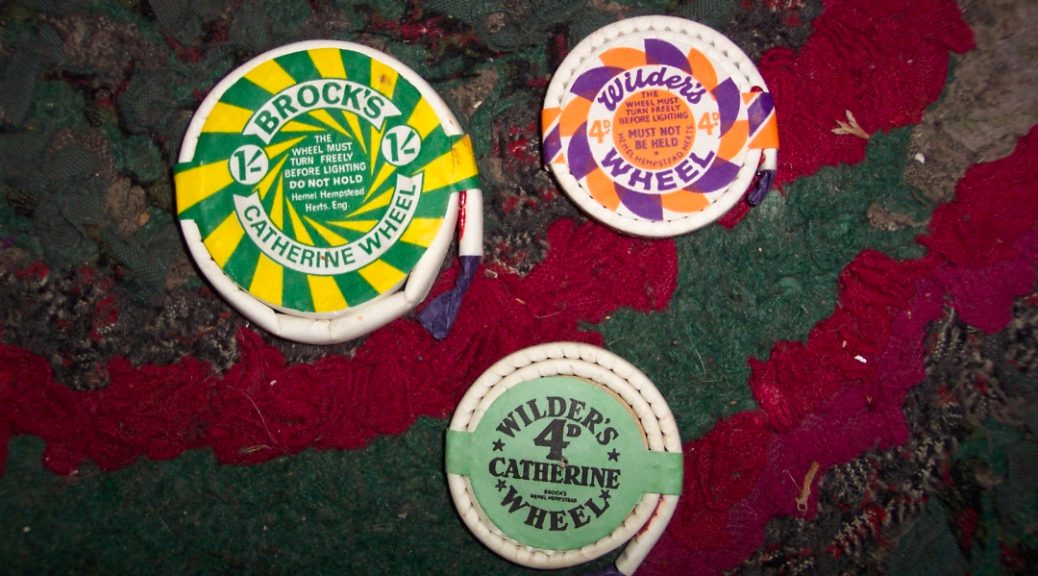
The origin of the humble Catherine Wheel
Most firework names are created once the firework itself has been designed, manufactured, tested and ready to leave the factory for transport to the end-user. I can't even tell you home many times colleagues and I have been asked to make suggestions for new firework names but when did fireworks become classified into the candles, fountains, wheels etc?
Once upon a time there was only a Catherine Wheel, Fountain, Rocket, Roman Candle and mines within that magical little selection box before the influx of the bigger fireworks and barrages became available to consumers today.
That immediately begs the question, why a ‘mine’ or a ‘roman candle’ and where do these names come from?
Let’s start with the one which has probably the deepest seated memories for most of us (I can still recall my lovely dad hammering a tack into the pear tree in our orchard for the Catherine wheel to go on!).
The Catherine wheel, recorded in print in a book from the mid-eighteenth century details it in a rather humorless fashion as ‘as device made to turn in a direction contrary to that in which the smaller rockets affixed to its periphery discharge themselves’. Now, I’m no expert but no lift charge = no rocket! so why describe them as such when fireworks had been largely used for a good few years by this point and it very much sounds like the type which are the more popular formulation of the Catherine wheel today than the traditional rolled up type.
Whilst records show the appearance of the Catherine wheel in the book of 1761 it was over a thousand years beforehand, in the middle of the 4th century and the legend of St Catherine of Alexandria that we find the first records of the humble Catherine wheel.
Legend has it that Catherine was the daughter of the pagan King and Queen of Alexandria, a bright girl who converted to Christianity and lived her early life in the pursuit of knowledge and learning as much as possible about her faith.
As a young woman, so incensed by the pagan Roman Emperor Maxentius actions in forcing people to follow the worship of pagan idols she challenged him directly. Never one to turn down a challenge he brought together a group of the most educated, philosophers and scholars into the city to argue against her pro Christian comments.
What he didn't bargain on was that her knowledge and sheer eloquence would affect these so-called allies and supporters of the emperor so much that they in turn declared themselves as Christian too. Needless to say, they were put to death for their convictions. Catherine in turn was beaten and imprisoned forthwith.
During her incarceration she was visited by many hundreds of people, including the wife of Emperor Maxentius, who, along with most of Catherine’s numerous visitors all ended up converting to Christianity too.
The Emperor was completely baffled and tried to win her over by offering to marry her. Unsurprisingly, she said no as she had promised her love, life and body to Jesus Christ. Not a happy chap, he decided to have her tortured and put to death on the breaking wheel.
Bear in mind that she was a young, beautiful, talented and intellectual young lady who it was deemed should be treated to the same fate as that felt by murderers and all this because she was a Christian.
The device itself was essentially just a large wooden wagon wheel with a number of spokes. The accused would be lashed spread eagle to the wheel before being beaten with either a cosh or figuratively, a wooden cross and the limbs would give way between the spokes.
Fate however had other ideas as before they could set to work on torturing her to death and it fell apart spectacularly, allegedly thanks to an angel who ‘blew up’ the device killing thousands of the pagans gathered to see her die.
Although she was eventually beheaded, she was sanctified and the many depictions of her throughout history often show her holding a smaller version of the wheel intended to take her life. St Catherine remains the patron saint of Spinners (wool or thread maker) wheelwrights (people who make wooden wheels) and Millers (a person who grinds flour or who work in a cornmill).
So that’s it – the name and the history behind the beautiful Catherine Wheel - and so a firework name was born.
